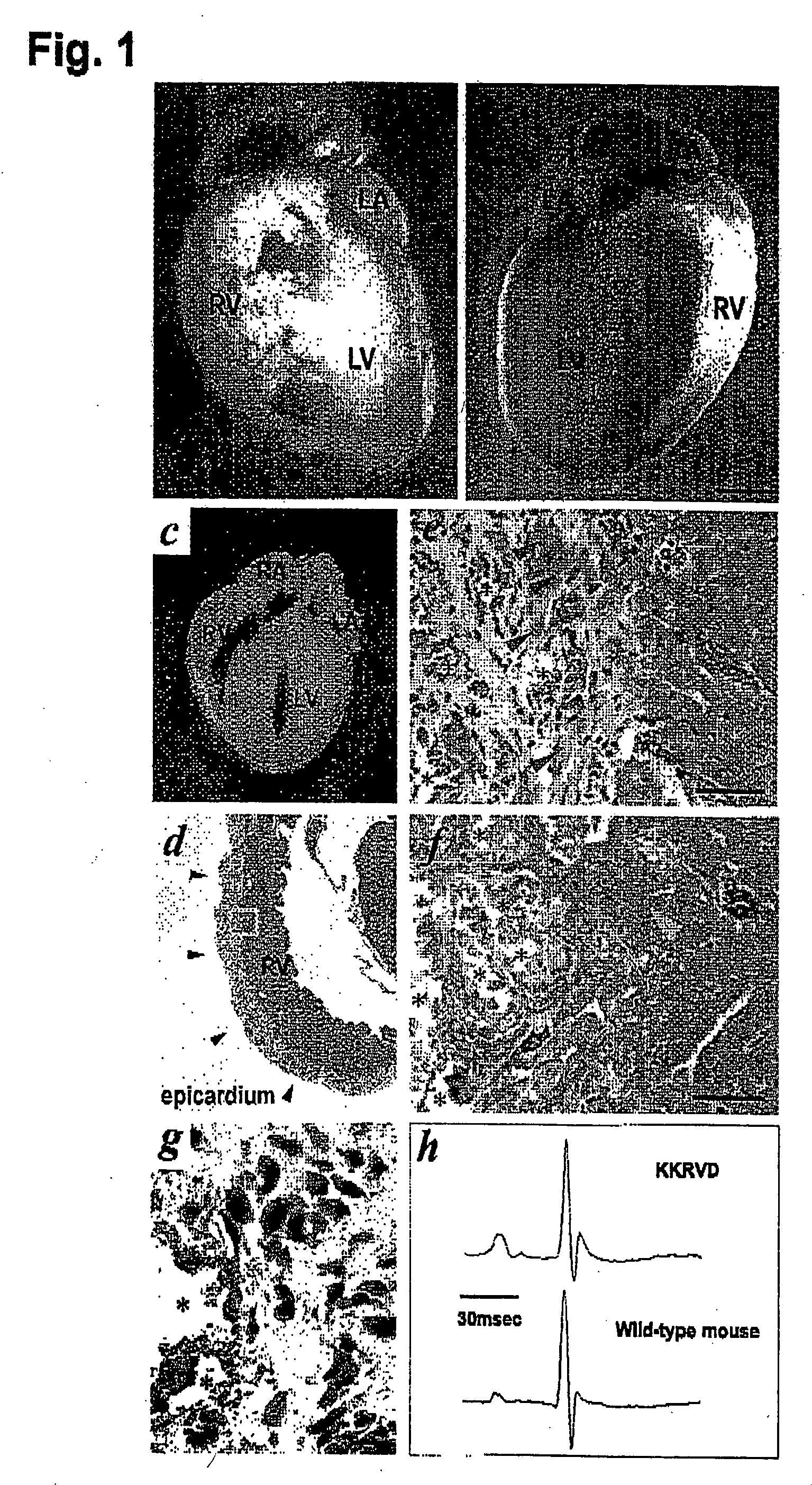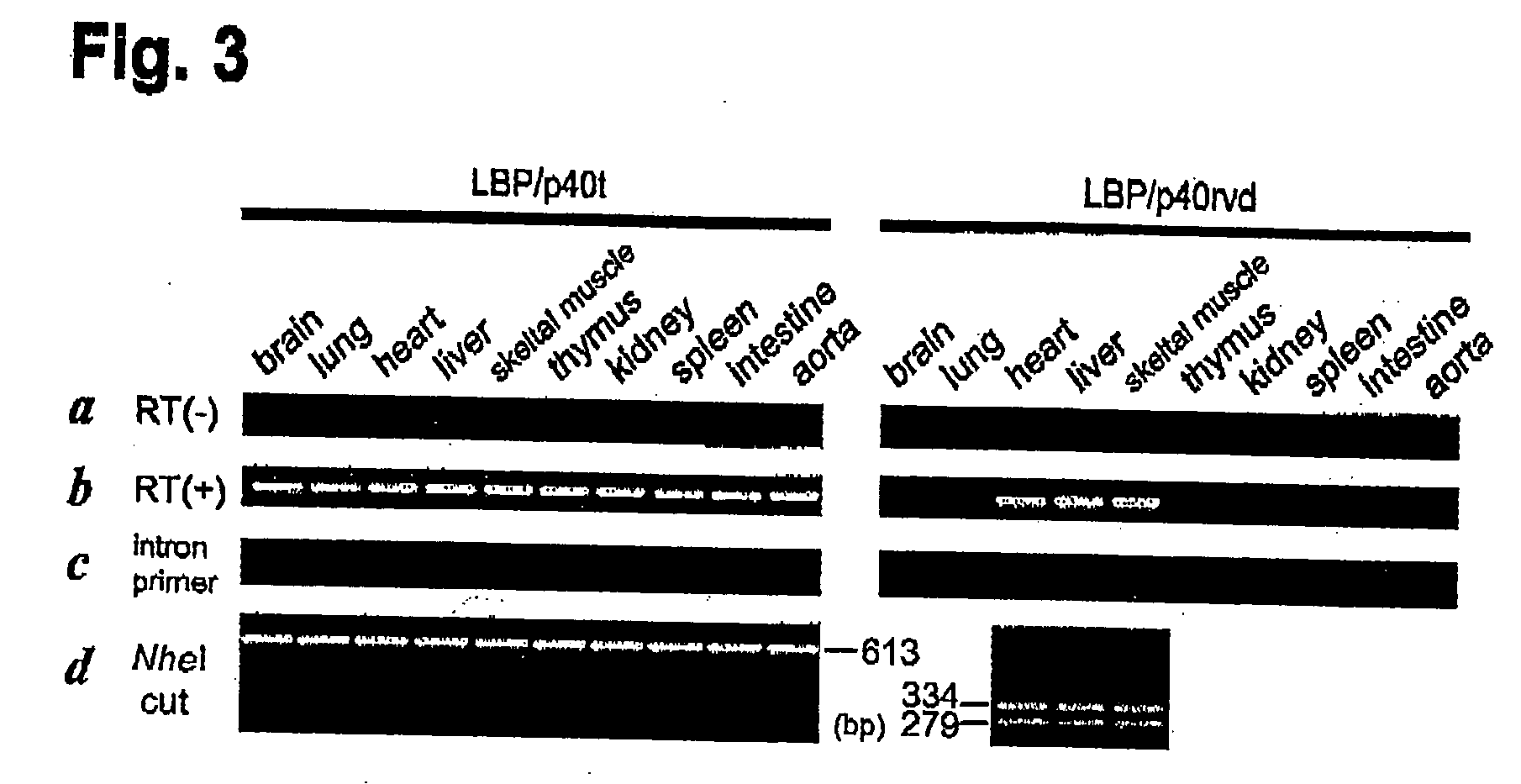Method for diagnosing arrhythmogenic right ventricular dysplasia
a right ventricular dysplasia and arrhythmogenic technology, applied in the field of arrhythmogenic right ventricular dysplasia diagnosis, can solve the problems of unresolved diagnosis difficulties, inability to express processed retroposons, and inability to diagnose cardiac events before onset, so as to prolong the life of cells and inhibit changes in chromatin architectur
- Summary
- Abstract
- Description
- Claims
- Application Information
AI Technical Summary
Benefits of technology
Problems solved by technology
Method used
Image
Examples
example
Methods
1. PWK Mouse Strain
[0126] The PWK strain belonging to Mus musculus musculus subspecies separated from Mus musculus domesticus some 1 million years ago, and is maintained as one of the wild-type-derived inbred strains.
2. Lamr1-tp1 Expressional Analysis
[0127] PCR assays were performed to confirm the presence of each identified mutation. Mismatch assays for the 287T to C and 291G to T mutants of the nucleic acid sequence of Lamr1 introduced changes at the penultimate 3′ position for the forward primer and 868C to T for the reverse primer, respectively
[0128] Following primers were used for the assay:
Lamr1 forward primer:TTGCCATCGAGAATCCTG,Lamr1 reverse primer:TGTGCACTCCAGTCTTCCG,Lamr1-tpl forward primer:TTGCCATAGAGAACCCTC,andLamr1-tpl reverse primer:TGTGCACTCCAGTCTTCCA.
[0129] Each PCR product was digested with NheI (specific for Lamr1-tp1 amplicon) to produce fragments of 334 bp and 279 bp; the Lamr1 amplicon was uncut.
3. Injection of Recombinant DNA In Vivo
[0130] Fe...
PUM
| Property | Measurement | Unit |
|---|---|---|
| flow rate | aaaaa | aaaaa |
| area | aaaaa | aaaaa |
| Northern blot | aaaaa | aaaaa |
Abstract
Description
Claims
Application Information
 Login to view more
Login to view more - R&D Engineer
- R&D Manager
- IP Professional
- Industry Leading Data Capabilities
- Powerful AI technology
- Patent DNA Extraction
Browse by: Latest US Patents, China's latest patents, Technical Efficacy Thesaurus, Application Domain, Technology Topic.
© 2024 PatSnap. All rights reserved.Legal|Privacy policy|Modern Slavery Act Transparency Statement|Sitemap



